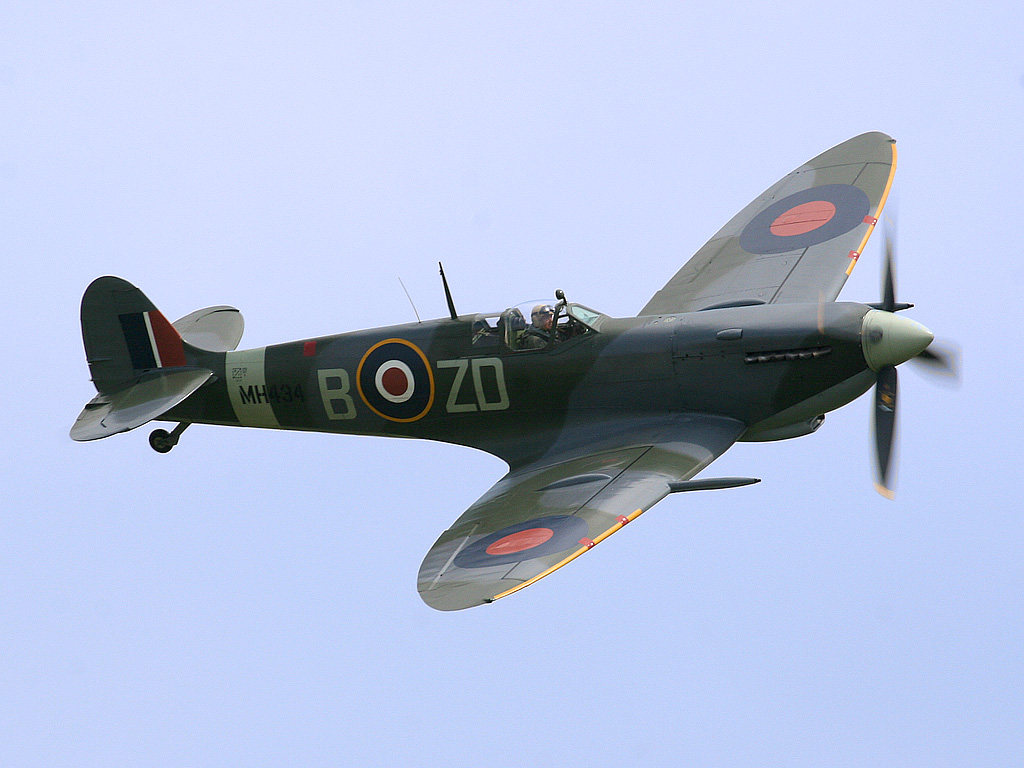Entering the second World War, planes were flying 400 miles per hour with guns able to shoot 600-700 yards and some could even fly as high up as 30000 feet. Along with new planes came new flying techniques and new tactics. One tactic, adopted from the Germans by the US, was called the Finger-four, where pilots would fly 200 yards apart in a loose line abreast pair. Diving out from the sun still proved effective but there were new ways of countering that. An alert pilot would be able to do a rudder reverse, going into a snap roll. This maneuver would put the diving plane at risk as the intended victim was going to be right on his tail. This maneuver, however, was limited to agile planes such as the famous British Spitfire and the Japanese Zero. Planes who could escape from the dive were the German Bf-109's and the American P-47's. During the day, planes would contact ground control to which would help pilots find enemy planes that couldn't be spotted by the naked eye. At night, however, things were different. Planes were not spotted till they were a couple hundred yards away from each other. It was not until planes had radar mounted on them that they could fight at night. Planes were also used for bombing runs. British Spitfires, Mosquitos, U.S. P-51 Mustangs, and P-38 Lightnings flew very low to avoid radar detection and bombed and strafed countless airfields and infantry columns. Night bombings were easier because there was a lowered threat until planes were fitted with radar.
Nearing the end of the war, jet planes were introduced. The Germans Me-262 was introduced when it was attacking the allies escorting bombers. The new planes reached speeds up to 741 miles per hour at sea level and 659 at 50000 feet. The planes were also fitted with advanced electronics which removed the task of early warning from the pilot’s eye and guided missiles extended the range of aerial combat, at least in theory, to beyond visual range. The planes in warfare began from being insignificant to being an integral part of warfare. They changed how wars were fought and extended the range of warfare with faster flying planes and long-range guns.
British Spitfire:

Japanese Zero:
German Me-262:

Sources:
https://en.wikipedia.org/wiki/Messerschmitt_Me_262
https://www.britannica.com/topic/air-warfare/Strategic-bombing
https://en.wikipedia.org/wiki/Supermarine_Spitfire
https://www.historynet.com/myth-of-the-zero.htm
I love seeing all these old World War 2 airplanes! As described in the article above, aviation warfare played a critical war during World War 2 as bombing and thus aircraft carriers were especially prominent. Airplanes allowed for radically different and unpredictable attacks. In fact, the Battle of Britain was fought almost entirely in the air in which they were able to stave off German bombers ultimately leading to their survival, and thus an ally victory.
ReplyDeletehttps://www.britannica.com/event/Battle-of-Britain-European-history-1940
https://en.wikipedia.org/wiki/Aviation_in_World_War_II
Edit: Britain's survival was vital for an allied victory because it provided a crucial launch point for the Invasion of Normandy or D-Day. Had Hitler captured Britain, it would have been near impossible for allied forces to invade Europe. In addition, one of the biggest naval battles in history, the Battle of Midway featured aircraft extensively in which hundreds of aircraft were lost by both sides.
Delete